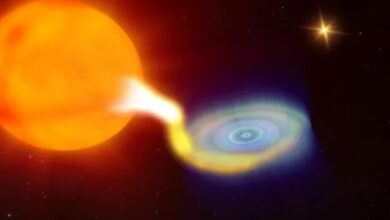Scientists propose to deflect asteroids heading towards Earth using nuclear X-rays.

Scientists have discovered that nuclear explosions could help protect Earth from asteroid impacts — not by destroying asteroids — but by using X-rays to deflect them from their path. A new study from Sandia National Laboratories suggests that detonating a nuclear weapon near an asteroid could generate X-rays strong enough to vaporize part of its surface, creating a force that could affect its course.
Testing asteroid deflection with X-rays
The concept was tested using Sandia’s Z Machine, the most powerful X-ray source on Earth. By generating a burst of X-rays similar to that of a nuclear explosion, researchers were able to simulate the conditions an asteroid would experience. The experiment successfully demonstrated how these intense X-rays could vaporize surface material on the asteroid, pushing it in a new direction.
Simulation of asteroid deflection in the laboratory
For their experiments, the researchers used quartz and silica targets, materials commonly found in asteroids. They suspended the targets in a vacuum and exposed them to powerful X-rays, which created a plume of vapor that caused the targets to accelerate. This simulated the effect of an asteroid being hit by X-rays in space. The targets reached speeds of about 155 mph, demonstrating that the concept is viable in real-world conditions.
A potential tool for planetary defense
If we scale these results to a larger scenario, a nuclear explosion a mile above a 2.5-mile-wide asteroid could generate enough force to prevent it from hitting Earth. This strategy could be especially useful for deflecting massive asteroids that pose a global threat, such as the one responsible for the extinction of the dinosaurs. Understanding how different asteroid materials respond to X-rays is essential for future missions to prevent catastrophic impacts on Earth.
In conclusion, this innovative approach offers a promising new method for planetary defense, where nuclear X-rays could potentially protect our planet from cosmic hazards.
Follow Gadgets 360 for the latest tech news and reviews. X, Facebook, WhatsApp, Wires And Google News. For the latest videos on gadgets and technology, subscribe to our YouTube channel. If you want to know everything about top influencers, follow our in-house Who is that360 on Instagram And YouTube.

New duck-billed dinosaur species discovered in Mexico, here’s what you need to know
WhatsApp expands testing for ‘Read all’ chats feature on latest beta for Android phones





